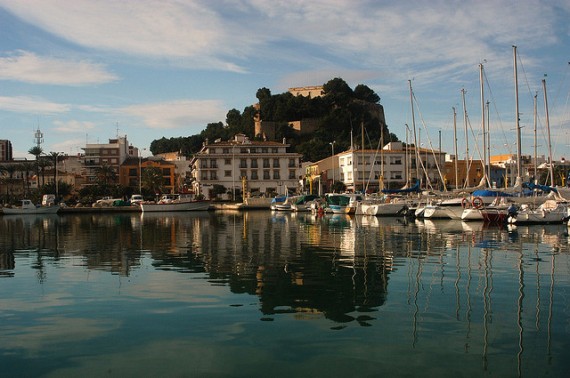

Location: San Francisco
Tel. 96 642 06 56
Open: daily
Closed: 1 Jan, 25 Dec
Denia Castle is a castle that served as a fortress during the time of Mediterranean piracy. It is located at the highest point in the city of Denia, in the province of Alicante, Spain.
It is one of the elements that defines the historical topography of
the urban center. Remains of homes and fortifications from the Roman
Diannium have been discovered on its slopes.
Its design dates
back to the Islamic period, between the 11th and 12th centuries. Since
then, various reforms are reflected in its architecture. In the Almohad
era, the construction of the Red Tower and the Torre del Consell in the
15th century, the bastions and other Renaissance-style defensive
systems, as well as the rebuilding of the Governor's Palace, in the 16th
and 17th centuries, under the auspices of the Duke of Lerma, Marquis of
Dénia.
The destruction of the Palace and the Vila Vella during
the War of Succession and the abandonment of the military square in 1859
define the last centuries.
On January 19, 1812, it was occupied
by French troops, who remained there until its recovery by the Spanish,
after a siege that lasted from June 15 to December 7, 1813.
Currently, the castle is configured as an emblematic heritage complex,
the scene of conservation and restoration works, as well as innovative
dissemination proposals.
On both sides of the access portal: Red Tower (15th century) and Cos
guard tower (12th century, remodeled in the 16th and 17th centuries)
The Portal de la Vila (access door to the castle), Almohad style (12th
century), with later remodeling. On the outside we find Almohad-style
pointed arches and on the inside we find a barrel-shaped arch, of which
part of the original is preserved.
The Consell Tower (15th century).
The city council met in this tower.
The Governor's Esplanade and his
Palace, where the archaeological museum is located.
The Quarter dels
Infants, with the function of warehouse or housing for a permanent
defensive troop.
The Baluart Portal, with 3 arches from different
periods and the Baulart Tower, a bastion of great strategic importance
since it controlled the access road to the palace grounds (18th
century).
Punta del Diamant, a defensive bastion, receives its name
from the shape of the tower.
Aljub (15th century), cistern that was
used to collect water.
The Cobblestone Road was the only access that
could be accessed with wheels, it was considered the main street. Its
cobbled pavement dates back to the 14th century.